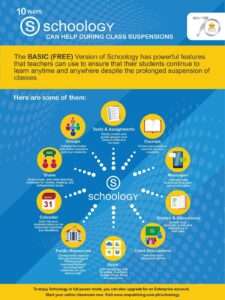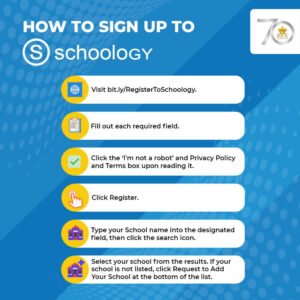Schools, colleges, and universities might soon be considering a transition of many of their classes and courses to online distance learning during the Covid-19 crisis which has been keeping many students at home and away from their physical classrooms. While it is mostly the college-level officers and presidents who have been using these platforms even before the pandemic struck, their peers in the elementary and high school levels might also resort to them as an alternative.
Rex Book Store, the country’s leading learning solution provider, has launched an online course, “Designing for Online Distance Learning,” for educational institutions and educators who either want to establish their own online distance learning platform, or strengthen their existing ones by improving the student-teacher interface despite their different locations.
Rex Book Store has also made the course user-friendly especially for first-time distance learning teachers who are exploring this new territory. The course also makes the student more pro-active by placing him at the center of the design of the online classes. While teachers have been the focus in the traditional classroom set-up, distance learning empowers the student to be more responsible for the development of his studies while tapping his intrinsic creativity and intelligence.
In transitioning to online distance learning, the main misconception is for the teacher to design learning experiences that replicate a classroom face-to-face instruction.

Francis Jim Tuscano, technology education expert and a Rex Book Store partner, elaborates, “Online distance learning does not and should not replicate classroom encounters. Instead, teachers can design online learning experiences that sustain interaction and deeper learning through well-planned synchronous and asynchronous, individual or collaborative learning experiences.
“The big idea behind online learning is to design learning structures or experiences that allow for a maximum level of interaction but still give students the right amount of independence to manage their learning pace and choices.”
At the core of the designing online learning is the teacher’s keen and in-depth understanding of the learners’ individual and collective environment in order to make the plan responsive to their needs and current situations. The learning experiences should also be aligned with the school’s learning goals.
Tuscano also points out two unique challenges that the newbie online teacher must keep in mind: geographical distance, and the students’ sense of isolation.
Tuscano says, “For distance learning, the main reality is that the teacher and students are separated from each other. They are in their own locations with no physical interaction. The students may feel lonely, unmotivated, and disconnected because of the non-physical presence of the teacher and their classmates.”
According to distance education pioneer and visionary, Michael Moore, the psychological effects are a result of the wide transactional distance between the learner and the teacher.
To reduce this gap or loneliness, Tuscano advises teachers and designers of online distance learning courses to always consider the amount of interaction that sustains learner engagement that leads to better learning. These means of interactions allow the learner to connect with the teacher, other learners, and even with the content.
Tony Bates of the SECTIONS Model for Tech Selection gives the following criteria to help educators assess the quality and effectiveness of various edtech platforms:
- Will students be able to use it?
- Does it have a learner/teacher-friendly learning curve?
- Is it a reasonable and justifiable investment?
- Does it support or help enable better teaching, instruction, and assessment?
- Does it support active interaction among student, teachers, and content?
- Is there support for teachers and learners?
- Does it allow students to network with other experts and sources?
- Does it comply with digital security and privacy laws?
Tuscano says, “It helps when learners are guided on how to create a safe and learning-conducive space at home or wherever they are. Younger students, parents, or guardians can be involved to foster a closer partnership for the greater interest and success of the learner.”
To know more about online distance learning, I have created and put up an online course, Designing for Online Distance Learning through the best and most reliable learning management system for online distance learning. Access the free online course on: https://app.schoology.com/register. Use the course code: 3GJ4-DH9Q-PQ6BT.

